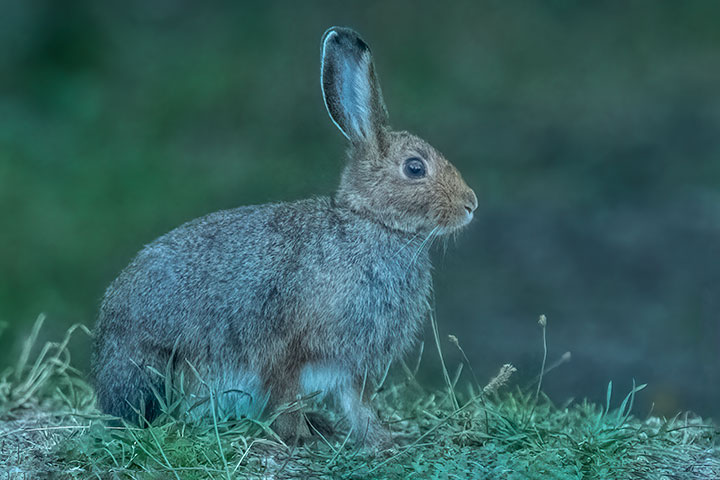Wildlife websites assure us that one of the many differences between rabbits and hares is that hares have much longer ears. Usually unmentioned is that this difference vanishes at our northern latitudes.
The snowshoe hare is present across mainland BC, and indeed through much of Canada. (Its range extends into the US along narrow mountainous tongues.) After looking at the snowshoe hare’s ears, one could be forgiven for thinking it was a rabbit.
The clue to this situation is that hares use their ears as heat exchangers. When the hare begins to overheat, it pumps warm blood through its ears to cool it before circulating that blood to the rest of the body. (Elephants do this also.) Hare species from lower latitudes and hot regions have particularly large ears to facilitate this cooling. Our snowshoe hare has scant need for the heat exchange offered by large ears as it lives in cooler northern climes. Consequently, its ears resemble those of a rabbit.
Yet, there are other differences that signal it to be a hare.
The snowshoe hare, sighted yesterday, has ears that look rather like those of a rabbit.

This blurry picture of its quick departure reveals one of the telltale signs that this is a snowshoe hare: its huge hind feet.


We see snowshoe hares here in northern Idaho. They have pretty big ears! and huge feet. In winter I see their tracks on the snow. Thanks for this post, I didn’t know how latitude relates to ear size.
Cool. The mountain tongues often refers to that forbidden ragtag collection of etias in the Caucasus between the Black and Caspian Seas.
Doug, OK, but my usage was merely a geometric description of the regions.
Thanks for the info reminders and good photo. I used only to see their tracks on winter snow, but the past 6 or so years, they’ve been munching on our gardens in summertime…this year mowing down beautiful lettuce just right for picking! I wonder if their usual enemy (coyote?) is fewer in number to cause their rise…any idea?
Karen, an interesting point. In the last while I have seen more hares than coyotes. Mind you, I have seen rather few of either of them.